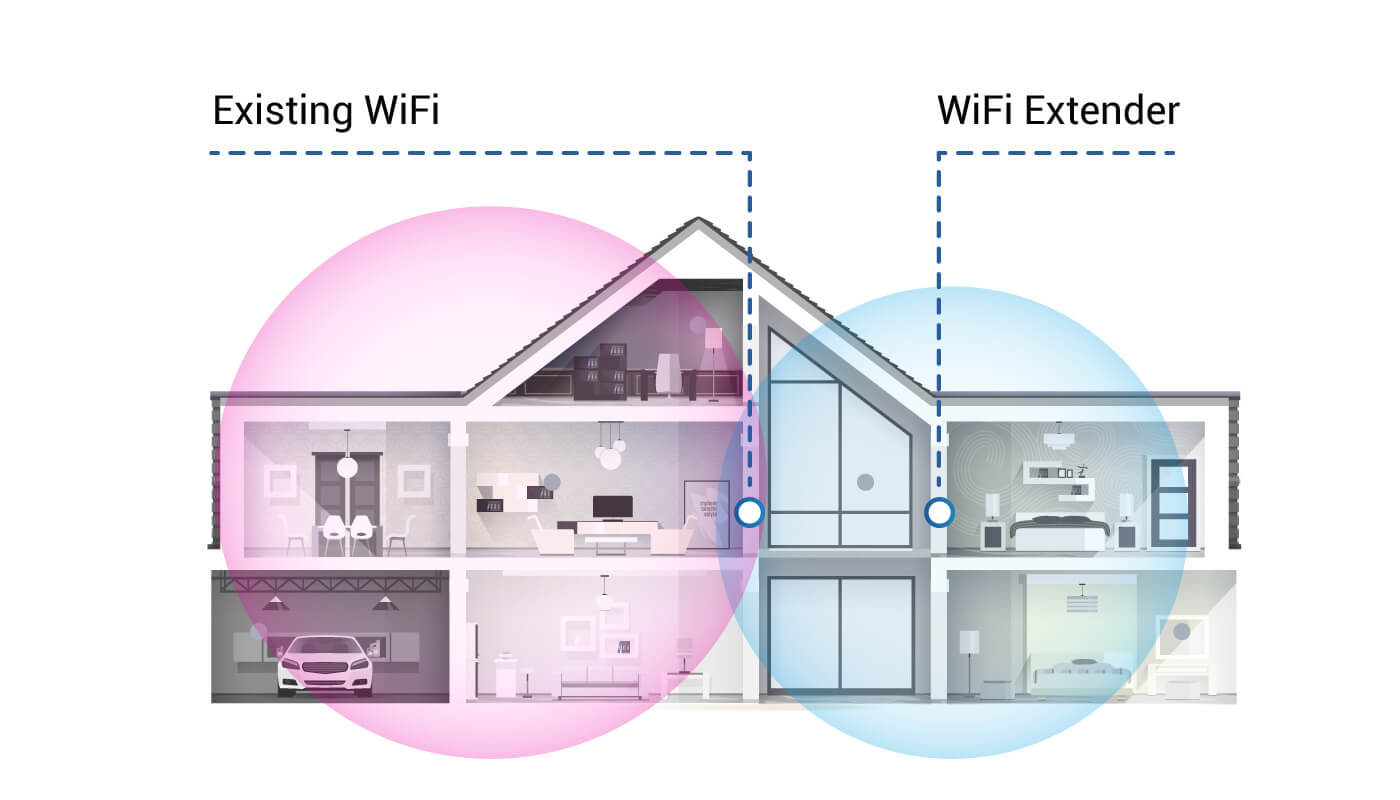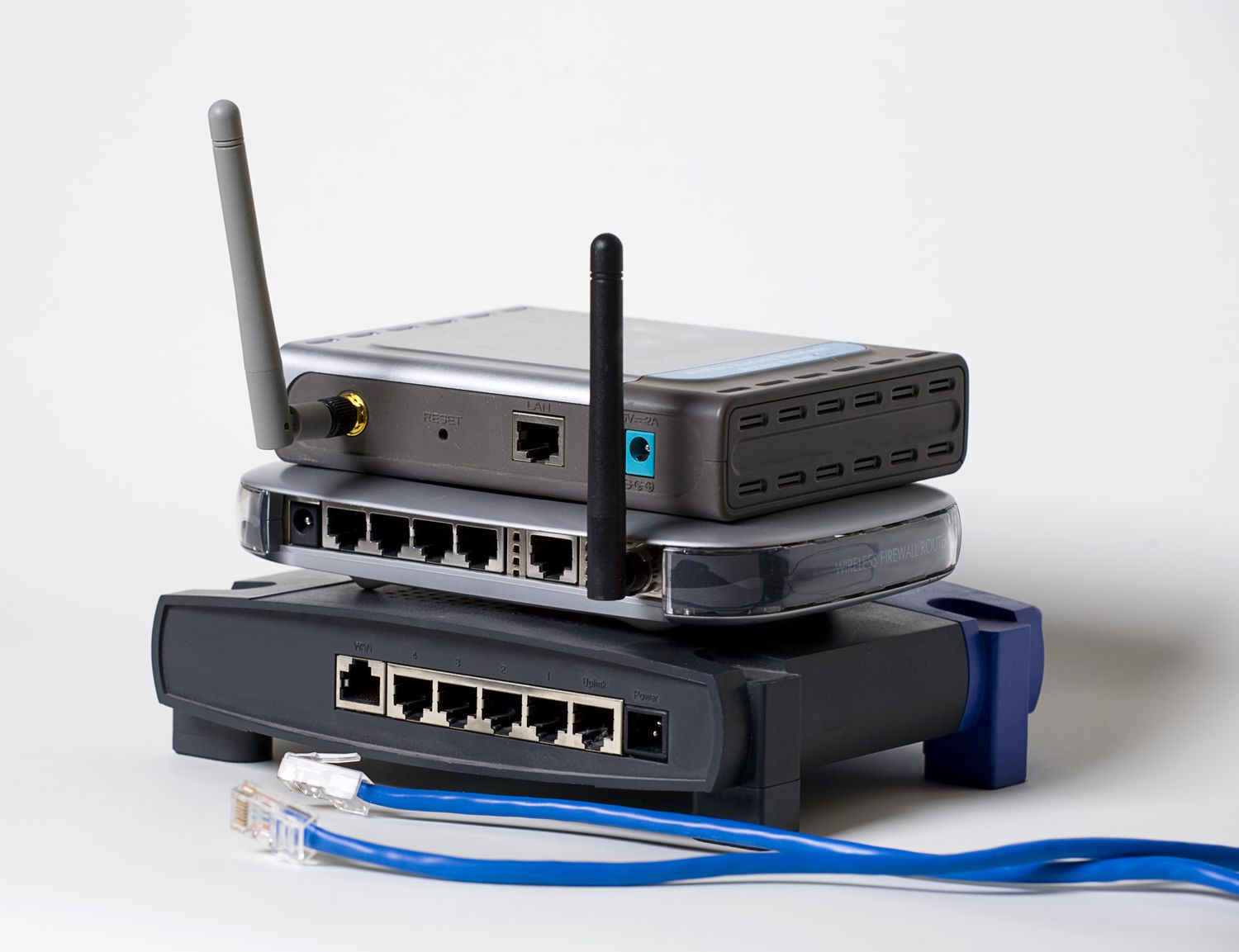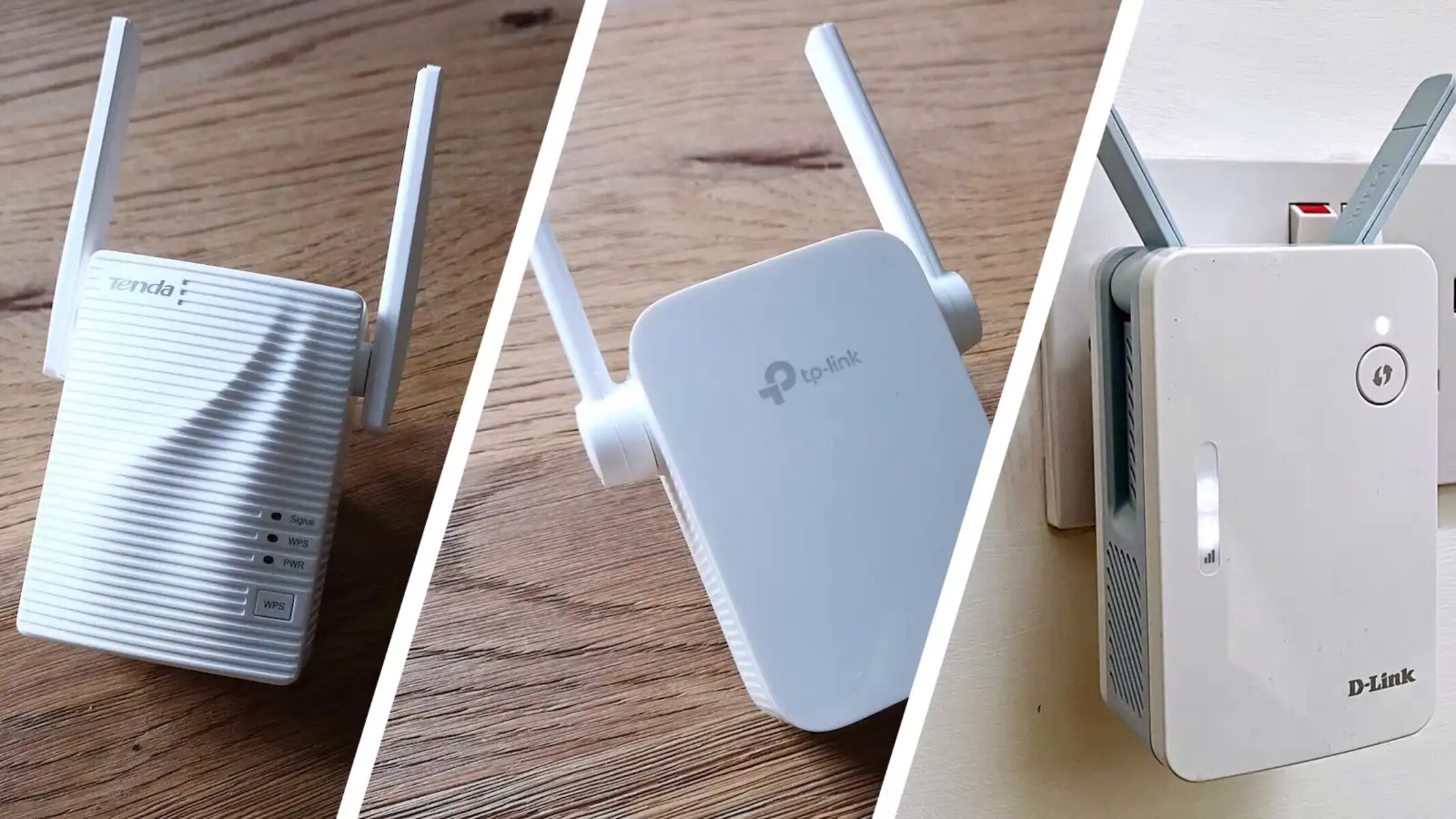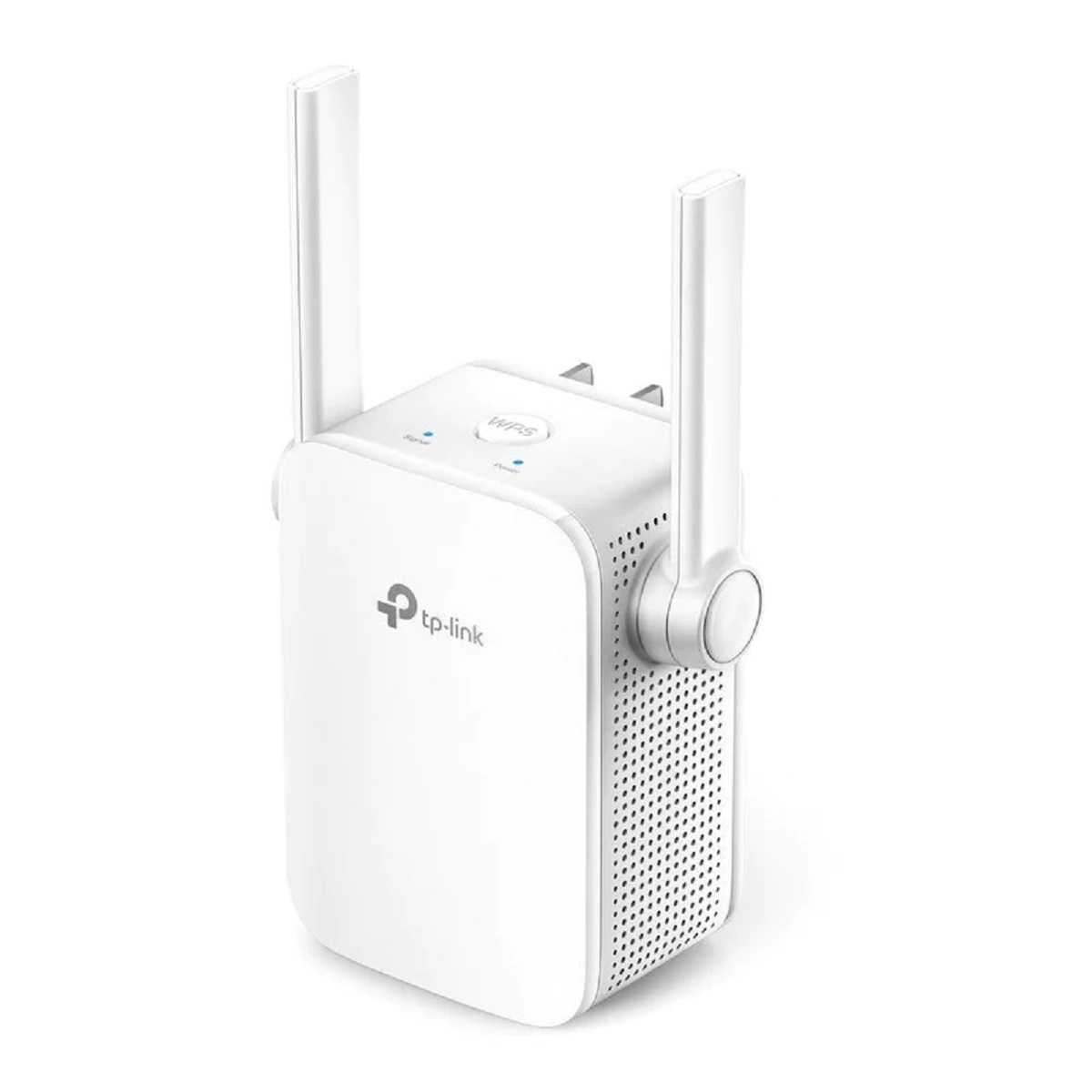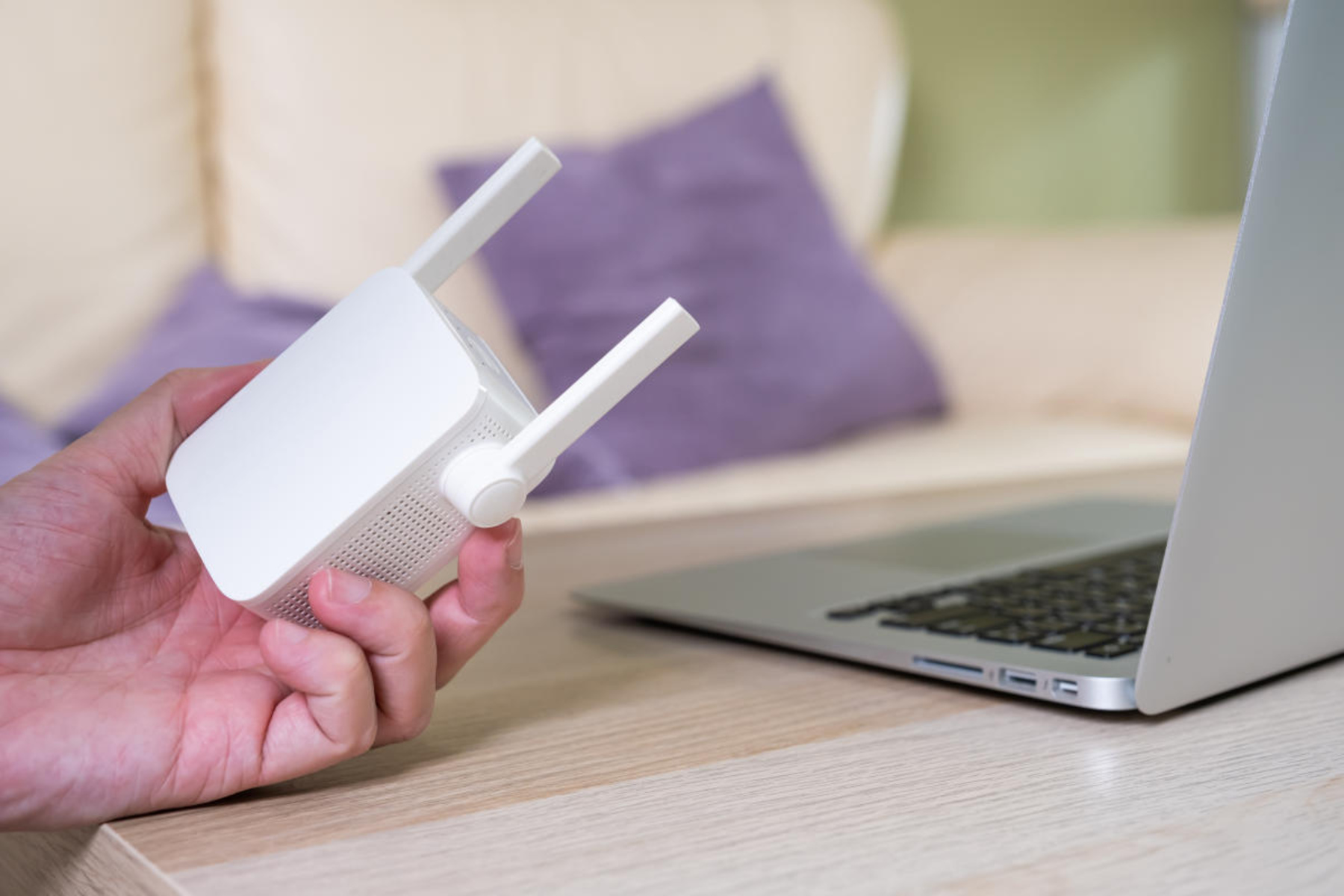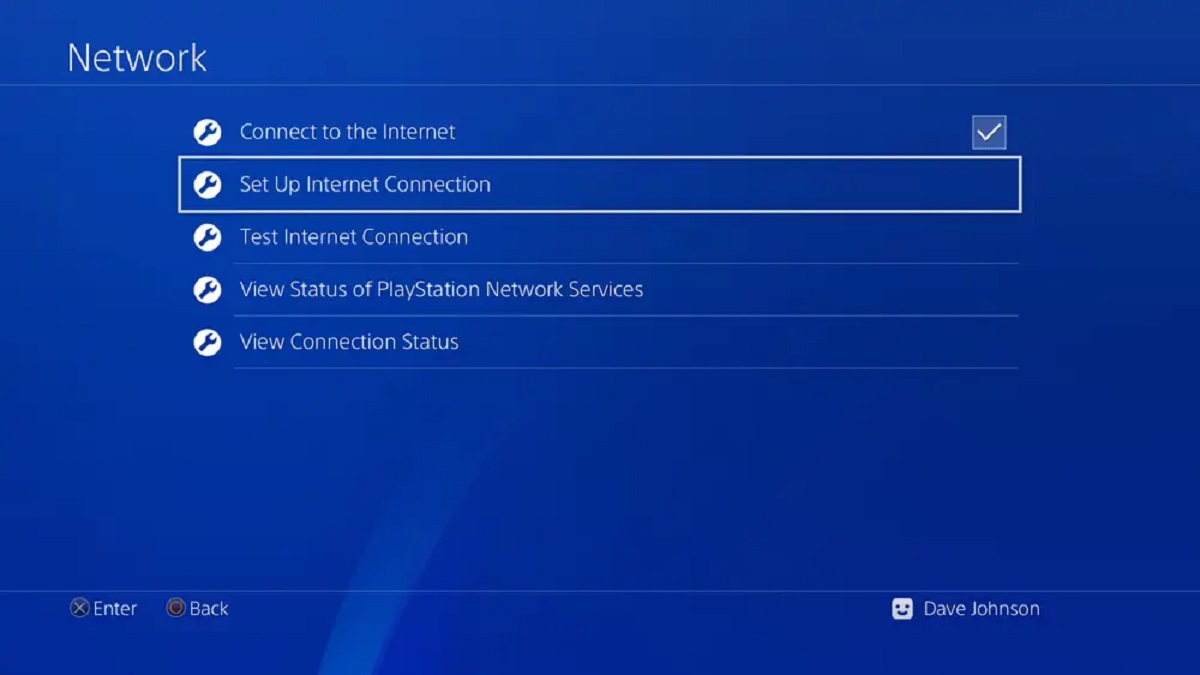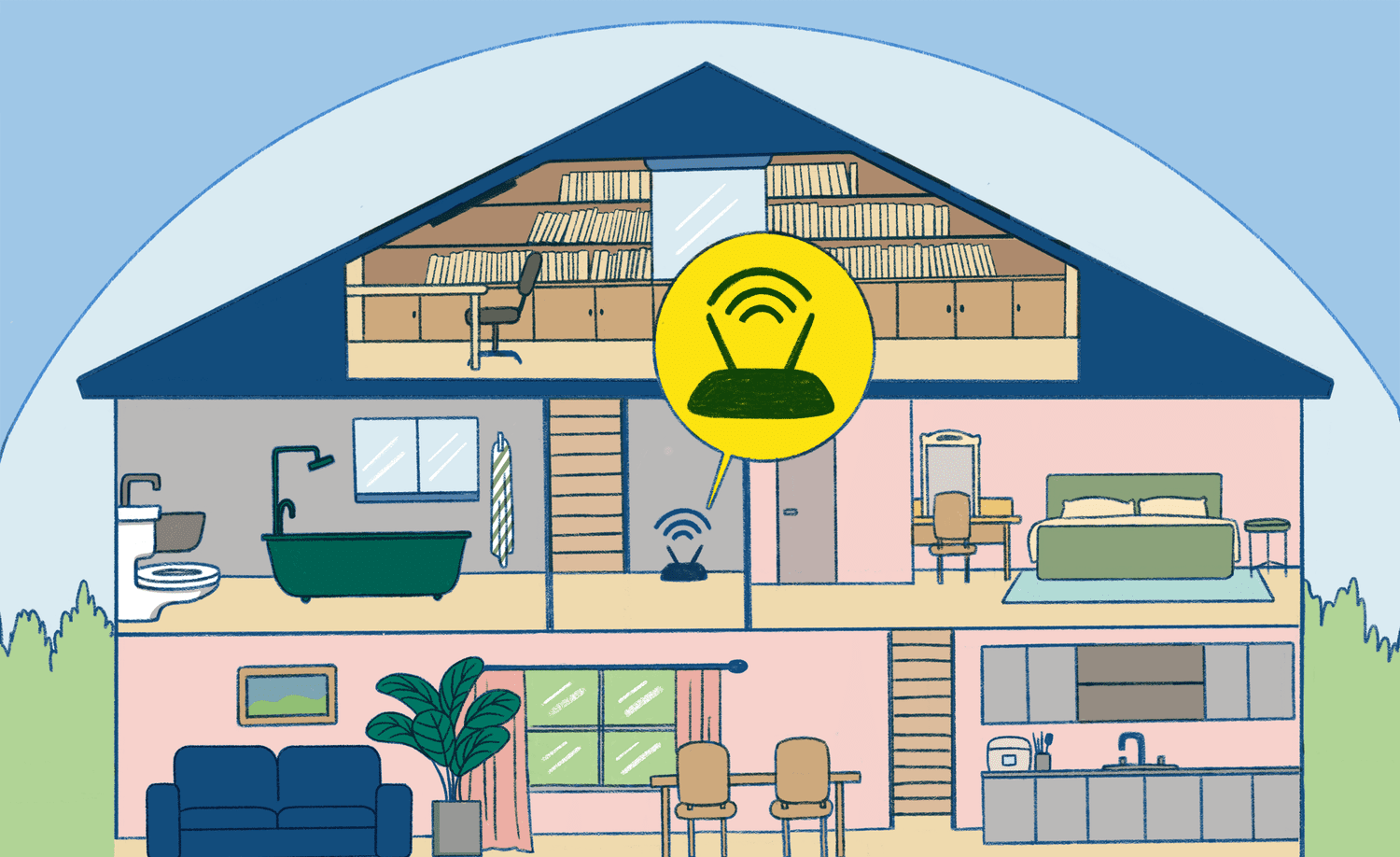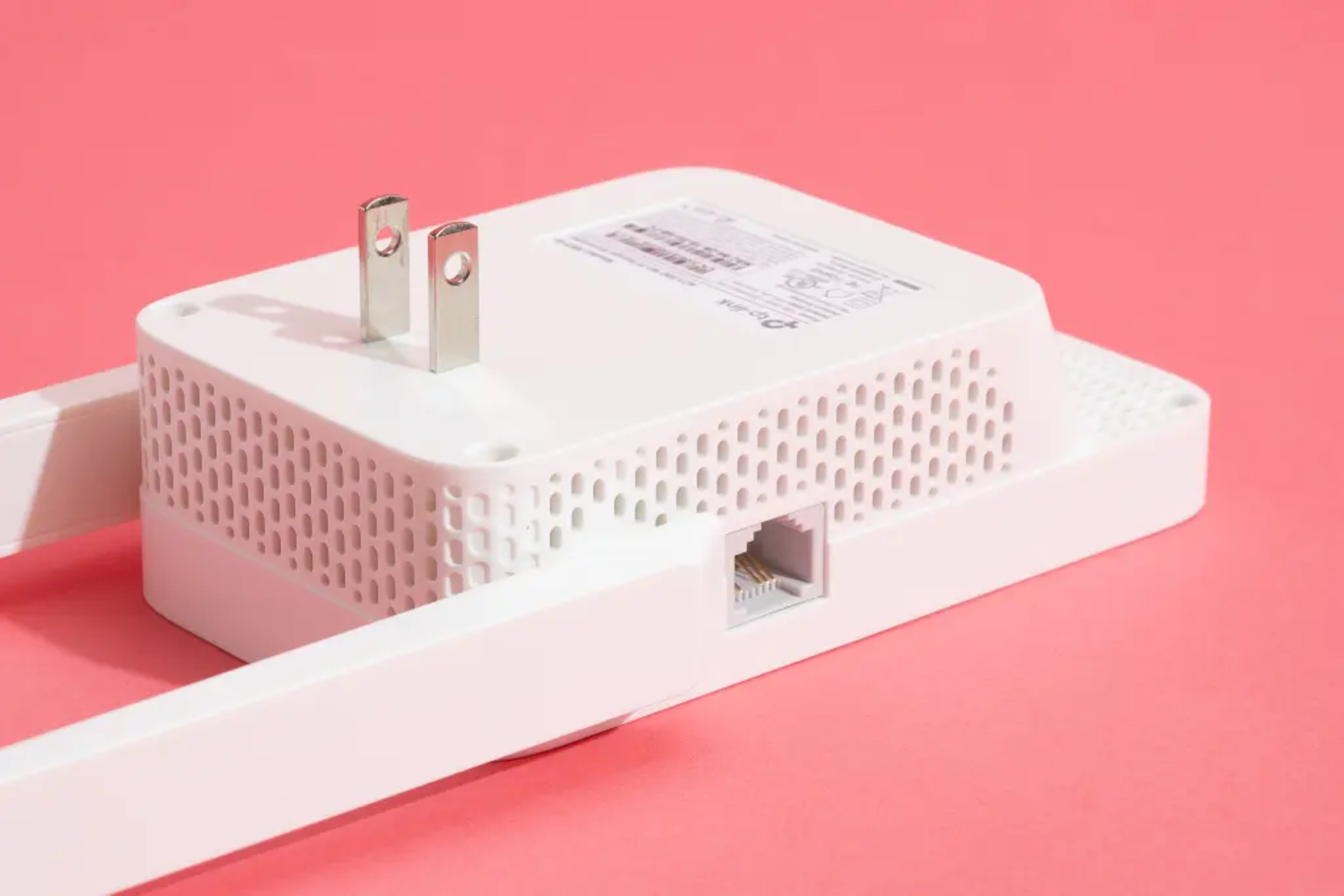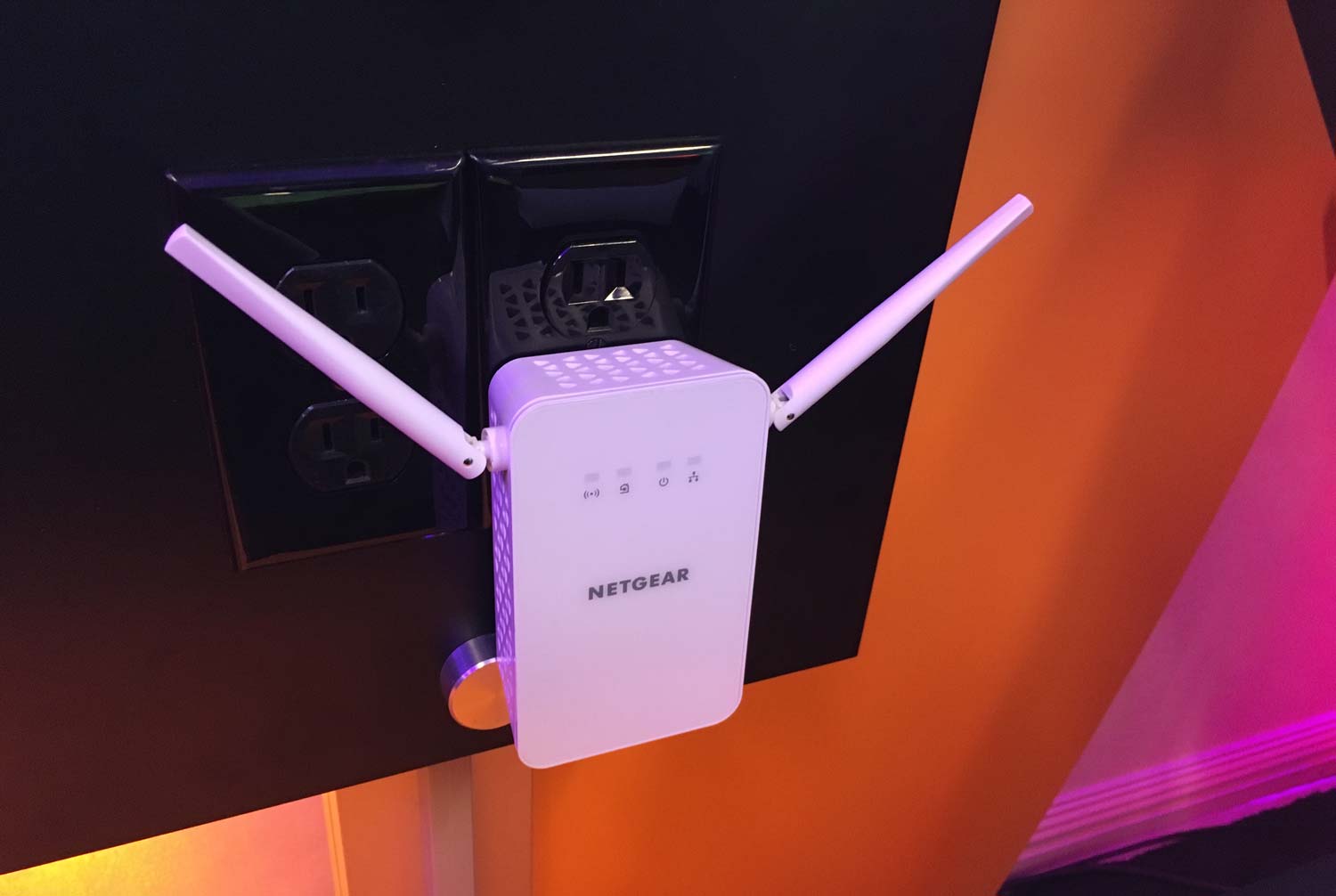Introduction
Wireless internet has become an essential part of our daily lives. From streaming movies to working remotely, a reliable and fast internet connection is crucial. However, many factors can affect the reach and quality of your WiFi signal, leaving some areas of your home or office with weak or no connectivity. This is where a WiFi extender comes to the rescue.
In this article, we will explore what a WiFi extender is, how it works, and the factors that can affect its range. Additionally, we will provide tips on how to determine the range you need and how to maximize the performance of your WiFi extender.
Whether you’re struggling with a weak signal in your bedroom, basement, or backyard, understanding how a WiFi extender can improve your internet connection will help you make an informed decision about investing in one.
So, let’s dive in and learn how a WiFi extender can help you expand your wireless network coverage and ensure a strong, reliable connection throughout your home or office.
What Is a WiFi Extender?
A WiFi extender, also known as a wireless range extender or WiFi booster, is a device that helps extend the coverage area of a wireless network. It acts as a bridge between your router and devices that are located too far away to receive a strong WiFi signal.
Think of a WiFi extender as a relay runner. When your router’s signal starts to weaken as you move further away, the WiFi extender picks up the signal and carries it further, ensuring that your devices can connect to the internet with a stable connection.
WiFi extenders are particularly useful in large homes or offices where the router’s signal strength might not reach every corner. They can also be handy in areas with thick walls or obstacles that can block or weaken the WiFi signal.
Most WiFi extenders are plug-and-play devices, meaning they are easy to install and set up. They typically require minimal configuration, making them accessible to anyone, regardless of their technical expertise.
It’s important to note that a WiFi extender is not the same as a WiFi repeater. While both devices serve a similar purpose of extending WiFi range, a repeater amplifies the existing signal, whereas an extender creates a new network with its own SSID (Service Set Identifier), helping to improve the overall performance and coverage of your WiFi network.
Now that we have a clear understanding of what a WiFi extender is and how it differs from a repeater, let’s delve into how exactly a WiFi extender works and how it can improve your wireless network coverage.
How Does a WiFi Extender Work?
A WiFi extender works by capturing the existing WiFi signal from your router and rebroadcasting it to reach areas where the signal is weak. It acts as a bridge between your router and devices, ensuring a strong and stable connection throughout your home or office.
When you set up a WiFi extender, it connects to your router wirelessly or through an Ethernet cable. It then creates a new network with its own SSID that is different from your router’s network. This new network extends the reach of your WiFi signal, allowing devices that are farther away to connect and enjoy a reliable internet connection.
When your device is within range of the extender, it will automatically connect to the extender’s network. As you move further away from the extender, your device will seamlessly switch back to your router’s network without any interruption.
It’s important to strategically place the WiFi extender in an area where it can receive a strong WiFi signal from your router. This will ensure that the extender can effectively rebroadcast the signal to areas with weaker coverage.
In terms of technology, WiFi extenders typically operate on either the 2.4GHz or 5GHz frequency band. The 2.4GHz band offers a wider coverage area but may experience more interference from other devices, such as microwaves and cordless phones. On the other hand, the 5GHz band can provide faster speeds but has a shorter range.
Many modern WiFi extenders also come with advanced features such as dual-band functionality, which allows them to operate on both 2.4GHz and 5GHz bands simultaneously. This provides flexibility and better performance, as devices can connect to the band that offers the best signal strength.
Overall, WiFi extenders are a useful solution for extending the range of your wireless network. They provide a simple and cost-effective way to enhance WiFi coverage, ensuring that you can stay connected wherever you are in your home or office.
Factors Affecting WiFi Extender Range
The range of a WiFi extender can be influenced by various factors that can either extend or limit its coverage area. Understanding these factors can help you optimize the placement and performance of your WiFi extender. Here are some key factors that can affect WiFi extender range:
- Distance from Router: The distance between your WiFi extender and your router plays a significant role in determining the range. Generally, the farther the extender is from the router, the weaker the signal strength and range will be.
- Obstacles: Physical obstacles like walls, floors, and furniture can obstruct and weaken WiFi signals. Thick walls, metal surfaces, and concrete barriers can have a more significant impact on the range of your WiFi extender, limiting its coverage area.
- WiFi Interference: Other electronic devices and WiFi networks in your vicinity can cause interference and reduce the range of your WiFi extender. Common sources of WiFi interference include microwaves, cordless phones, baby monitors, and neighboring WiFi networks on the same channel.
- WiFi Extender Placement: The placement of your WiFi extender is crucial for maximizing its range. Ideally, it should be positioned in a central location between your router and the areas where you need better WiFi coverage. Avoid placing the extender near large obstacles or areas with a weak WiFi signal.
- WiFi Extender Antennas: Some WiFi extenders come with external antennas that can be adjusted for better signal strength and coverage. Properly positioning these antennas can significantly improve the range of your WiFi extender.
- WiFi Extender Model and Quality: The quality and capabilities of your WiFi extender can also affect its range. Higher-quality extenders with advanced technologies tend to have better range and performance compared to lower-end models.
It’s essential to keep these factors in mind while setting up your WiFi extender to ensure optimal range and performance. Experimenting with different extender placements and configurations can help you find the ideal setup that maximizes your WiFi coverage.
Range of WiFi Extenders
The range of a WiFi extender can vary depending on several factors such as the specific model, the environment in which it is used, and the presence of obstacles or interference. Generally, WiFi extenders can cover a range of up to 150 feet indoors and 300 feet outdoors.
It’s important to note that these are rough estimates, and the actual range can vary. The range stated by the manufacturer is typically based on optimal conditions with minimal interference. In real-world scenarios, the range may be shorter due to factors such as walls, furniture, and other devices that can weaken the WiFi signal.
Additionally, the type of WiFi extender can also affect the range. Single-band extenders, which operate on the 2.4GHz frequency band, typically offer a wider coverage area but may experience more interference from other devices. Dual-band extenders, on the other hand, provide the advantage of operating on both the 2.4GHz and 5GHz bands, offering better performance and flexibility in terms of range.
When selecting a WiFi extender, it’s essential to consider your specific needs and the layout of your home or office. If you have a larger space or multiple floors, you may need a WiFi extender with a longer range or additional units to ensure optimal coverage. In contrast, for smaller spaces, a WiFi extender with a shorter range may suffice.
Keep in mind that while a WiFi extender can expand the range of your network, it is not a magic solution for limitless coverage. The extender’s range should be considered in conjunction with factors like the signal strength of your router, the placement of the extender, and the presence of any obstructions or interference.
To determine the range that you need for your WiFi extender, consider the areas in your home or office where the WiFi signal is weak or non-existent. Map out these areas and ensure that the extender you choose can cover those spots adequately.
Overall, WiFi extenders provide a practical solution for extending the range of your wireless network. Understanding the range capabilities and limitations of WiFi extenders will help you make an informed decision when selecting one that suits your needs.
How to Determine the Range You Need
Determining the range you need for your WiFi extender is an important step in ensuring that it can cover the areas where you require a stronger WiFi signal. Here are some steps to help you determine the range you need:
- Identify Problem Areas: Start by identifying the areas in your home or office where you experience weak or no WiFi connectivity. These can be areas far from your router, rooms on different floors, or outdoor spaces.
- Measure Distance: Use a measuring tape or estimate the distance between your router and the problem areas. This will give you an idea of the range you need to cover with your WiFi extender.
- Consider Obstacles and Interference: Take note of any obstacles or interference that may affect the WiFi signal. Thick walls, metal surfaces, and other electronic devices can impact the range of your WiFi extender.
- Research Extender Specifications: Look for WiFi extenders that have a range that matches or exceeds your identified distance. Pay attention to the specifications provided by the manufacturer and reviews from other users to ensure that the extender you choose can meet your needs.
- Consider Multiple Extenders: If you have a large home or office with multiple problem areas, you may need to consider using multiple WiFi extenders to ensure optimal coverage. This can help eliminate dead zones and provide a seamless WiFi experience throughout your space.
By following these steps, you can determine the range you need for your WiFi extender and make an informed decision when selecting the right extender for your specific requirements.
Remember, it’s always better to err on the side of caution when it comes to range. Opting for a WiFi extender with a slightly longer range than what you initially estimate can provide a buffer and ensure that you have adequate coverage for all your devices.
Keep in mind that the range of your WiFi extender can also be influenced by factors like the power output of your router, the placement of the extender, and any obstacles or interference in the environment. Taking these factors into consideration alongside your determined range will help you achieve the best WiFi coverage possible.
Tips to Maximize WiFi Extender Range
To ensure that you get the most out of your WiFi extender and maximize its range, consider the following tips:
- Optimal Placement: Position your WiFi extender in a central location between your router and the areas where you need better WiFi coverage. This will help ensure that the extender can receive a strong WiFi signal from the router and extend it effectively.
- Avoid Interference: Keep your WiFi extender away from other electronic devices that can interfere with the WiFi signal, such as cordless phones, baby monitors, and microwave ovens. These devices can disrupt the signal and reduce the range of your extender.
- Adjust Antennas: If your WiFi extender has adjustable antennas, experiment with their positions to find the orientation that provides the best signal strength and range. Tilting or rotating the antennas can sometimes make a significant difference.
- Keep Firmware Updated: Check for firmware updates for your WiFi extender regularly. Updating the firmware can enhance performance and address any bugs or issues that may affect the range or stability of your extender.
- Secure Your Network: Protect your WiFi network with a strong password to prevent unauthorized users from accessing your network. This will also help ensure that your WiFi extender is only used by authorized devices, optimizing the range and performance.
- Use Quality Equipment: Invest in high-quality WiFi extenders that have good range capabilities and reliable performance. While they may be slightly more expensive, they are likely to provide better range and overall coverage.
- Minimize Signal Interference: Reduce signal interference by selecting the least crowded WiFi channels. You can use tools like WiFi analyzers to identify the channels with the least interference and manually configure your router and extender to use those channels.
- Regularly Reboot: Occasionally reboot both your router and WiFi extender. This can help refresh the connection and improve the overall performance and range of your wireless network.
By following these tips, you can optimize the range and performance of your WiFi extender. Remember that each home or office environment is unique, so it may require some trial and error to find the best configuration that suits your specific space and needs.
Experiment with different placements, adjust the antennas, and monitor the signal strength to achieve the best results. With the right setup, you can enjoy a strong and reliable WiFi connection throughout your entire premises.
Conclusion
WiFi extenders are valuable tools for expanding the range and coverage of your wireless network. By understanding how WiFi extenders work and considering factors like the range you need, you can make an informed decision when selecting an extender that suits your requirements.
Throughout this article, we’ve explored what WiFi extenders are, how they work, and the factors that can affect their range. We’ve discussed the importance of strategic placement, minimizing interference, and optimizing the performance of your WiFi extender.
Remember that while WiFi extenders can improve your network coverage, they are not a cure-all solution. Other factors, such as the quality of your router, the presence of obstacles, and interference from other devices, can impact the performance and range of your extender.
By following the tips provided, you can maximize the range and performance of your WiFi extender and enjoy a strong and reliable internet connection throughout your home or office.
Whether you’re struggling with dead zones or weak signals in certain areas, a WiFi extender can be an efficient and cost-effective solution to enhance your WiFi coverage.
So, take the time to assess your needs, research different WiFi extender models, and apply the tips mentioned in this article. With the right setup, you can eliminate wireless dead zones and enjoy the convenience of a seamless and reliable internet connection across your entire space.







